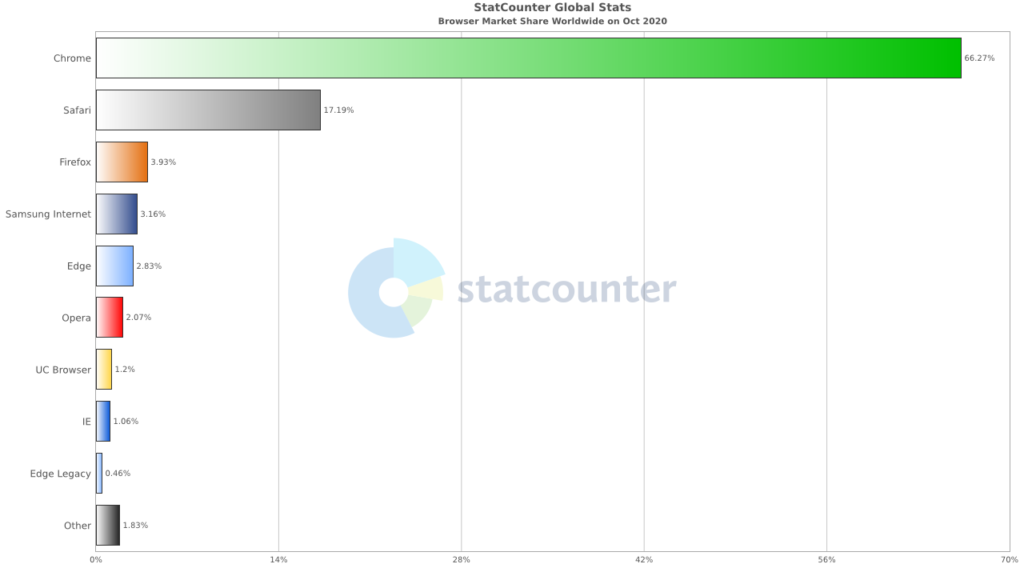(Part 4 – A thought experiment on the role of DNS providers and Web browsers in tacking the spread of misinformation)
We’re in a situation today where Google’s Chrome internet browser has a two-thirds market share overall. And probably even more on mobile, given that it is the default browser shipped on almost every Android phone:
Google also operates a public DNS at 8.8.8.8.
Finally, Google operates its core search engine, which is the home page for every Chrome browser and used daily by nearly every person connected to the Internet (except by those in China).
This puts Google in a uniquely powerful position to tackle misinformation on the Internet. It could build those misinformation blocklists into the browser itself. It could make them part of its public DNS resolution. It could build them into into search results, warning people before they even clicked on the search result to a navigate to the website.
Unfortunately, it has little incentive to do so. Google’s business is built on advertising. If it blocks misinformation but not intrusive advertising, it is hypocritical. If it blocks intrusive advertising but not its own ads, it is even worse hypocrisy (even though it has begun to block some of the worst offender).
Finally, Google’s positioning of neutrality on the Internet is an asset in its efforts to avoid being labelled and prosecuted as a monopolist. It cannot afford accusations of actively and flagrantly censoring web search results, as necessary and healthy for the Internet as it may be.
To conclude
Over this series, we’ve seen how harmful to a society misinformation can be, how, just like spam, it’s cheap to create and propagate but hard to research and refute.
We’ve seen how it is not in social media’s interests to tackle misinformation, how it’s a community problem and incumbent on us to solve. To that, we have explored possible ways and existing/past services to counter misinformation – on the web, Twitter and other social media. Not all of them exist or are even simple, but they are all opportunities.
Finally, this post was a thought experiment about bending the Internet’s neutrality to make it a safer place. We saw how Google is in the most powerful position to identify and hamper misinformation, but how doing so would threaten it both commercially and politically.
It doesn’t make for hopeful reading. But it’s becoming even clearer to me that the solution to misinformation – just like the solution to spam – is bottom-up and community-led, not top-down. We have grown accustomed to a steady stream of free-to-use services and apps from large tech companies. As a consequence we look to them to solve our problems. We, especially the readers of this site and similar ones, must recognise that tech companies benefit by enabling our addictive behaviours, not by encouraging thoughtful and responsible ones.
The solutions are in our hands – not theirs.
(ends)

